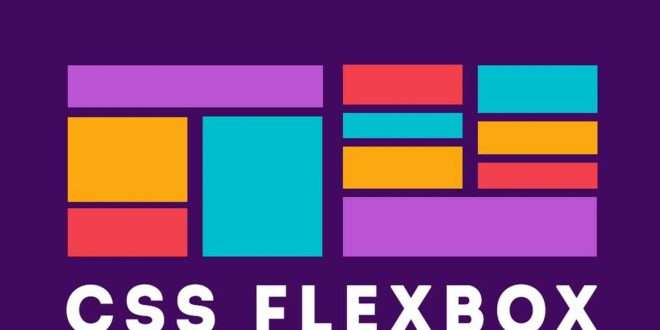In this comprehensive blog, we delve into the art of responsive typography and unveil the power of CSS Flexbox to enhance readability on various devices. Our expert insights and practical tips will equip you with the knowledge to create visually appealing and user-friendly text layouts that adapt flawlessly to different screen sizes. Let’s explore the world of CSS properties and delve into this dynamic tutorial that will transform your approach to typography.
Understanding the Essence of Responsive Typography
Responsive typography is more than just adjusting font sizes to fit different screens; it’s about creating an immersive reading experience for users, regardless of the device they use. As technology advances and users access websites on various devices, mastering responsive typography becomes paramount for web designers and developers.
Responsive typography focuses on:
- Fluidity: Ensuring text scales smoothly with screen size changes.
- Readability: Maintaining legibility and comfortable reading experiences.
- Accessibility: Ensuring all users can access content without hindrance.
- Aesthetics: Balancing visual appeal with functional typography.
The Power of CSS for Typography
CSS (Cascading Style Sheets) plays a pivotal role in shaping the presentation of web content, including typography. With CSS, you have control over fonts, font sizes, spacing, and more. And when it comes to responsive typography, CSS Flexbox shines as a reliable tool for layout management.
CSS Flexbox: An Overview
CSS Flexbox is a flexible layout model that streamlines the arrangement of elements within a container. It offers a responsive grid system, making it ideal for typography since text elements often form the backbone of web content.
Key properties of CSS Flexbox include:
display: flex: Activates the Flexbox container.flex-direction: Establishes the main axis direction (row or column).justify-content: Aligns items along the main axis.align-items: Aligns items along the cross axis.flex-wrap: Controls whether items wrap to a new line or not.
Embracing Fluid Typography with vw Units
Fluid typography ensures font sizes adjust proportionally to the viewport size. By employing vw (viewport width) units, we achieve a responsive typographic design that scales with the screen. For instance, setting font size as font-size: 5vw; means the text size will be 5% of the viewport width.
This technique allows for a seamless reading experience on any device, preventing the need to zoom in or out to read the content comfortably.
Scaling Fonts with clamp() Function
The clamp() function in CSS is a powerful tool to set fluid font sizes, constraining them between minimum and maximum values. It’s an excellent alternative to using fixed font sizes, as it adapts better to different screen sizes.
An example of using clamp() is: font-size: clamp(16px, 5vw, 24px);, where the font size remains between 16px and 24px, scaling based on viewport width.
Line Length for Optimal Reading
While responsive typography is crucial, line length (the width of text blocks) also affects readability. Extremely long lines can strain the reader’s eyes, while very short lines interrupt the reading flow.
As a rule of thumb, aim for line lengths of 50-75 characters per line for optimal readability. CSS Flexbox allows us to control line length by setting container widths or using flex properties.
Prioritizing Readability with Proper Line Spacing
Line spacing, or “line height,” is another critical aspect of responsive typography. Ample line spacing enhances readability by providing a clear visual distinction between lines of text.
Ensure line spacing is at least 1.5 times the font size (e.g., line-height: 1.5;), promoting a comfortable reading rhythm and preventing text from feeling cramped.
Dynamic Typography with Media Queries
Media queries enable us to apply different CSS rules based on the device’s characteristics, such as screen size and resolution. Leveraging media queries for typography allows us to customize font sizes, line lengths, and line spacing for specific devices.
For example, you can adjust font sizes for smaller screens or increase line spacing for improved legibility on larger screens.
Optimizing for Accessibility
Accessible typography ensures that all users, including those with visual impairments, can access and comprehend the content. Here are some key considerations for optimizing typography for accessibility:
- Use web-safe and readable fonts.
- Maintain sufficient color contrast between text and background.
- Avoid using only color to convey meaning.
- Provide resizable text options.
- Test the design with screen readers for compatibility.
Final Words: Mastering Responsive Typography with CSS Flexbox
In conclusion, responsive typography is an art that requires a blend of aesthetics, functionality, and adaptability. By harnessing the power of CSS Flexbox, you can create an exceptional reading experience across devices.
Embrace fluid typography with vw units and clamp() function to ensure text scales seamlessly. Pay attention to line length and line spacing for optimal readability, and utilize media queries to tailor typography for various devices.
Remember to prioritize accessibility to make your content inclusive for all users. With CSS Flexbox, you can unlock the true potential of responsive typography and elevate your web design to new heights.
Commonly Asked Questions
Q1: Can I use any font for responsive typography?
A1: While you can use a wide range of fonts, it’s essential to prioritize readability and accessibility. Stick to web-safe fonts or use fonts from reputable sources that load quickly and offer good legibility across devices.
Q2: How do I handle responsive typography for different orientations, such as landscape and portrait on mobile devices?
A2: CSS Flexbox automatically adjusts the typography based on the container’s orientation. By employing media queries, you can further fine-tune the typography for different orientations and ensure an optimal reading experience.
Q3: Should I use relative or fixed units for font sizes?
A3: For responsive typography, it’s generally better to use relative units like vw or em, as they scale proportionally with the screen size. Fixed units, like px, may not adapt well to different devices.
Q4: Can I apply CSS Flexbox to non-text elements as well?
A4: Absolutely! CSS Flexbox is a versatile layout model that can be used for various elements beyond text. It’s particularly useful for creating responsive grids and aligning elements in a container.
Q5: How can I test the accessibility of my typography design?
A5: There are several tools available that can help you evaluate the accessibility of your typography, including contrast checkers and screen reader testing tools. Conduct thorough tests to ensure your typography is inclusive and user-friendly.
 webfily
webfily



